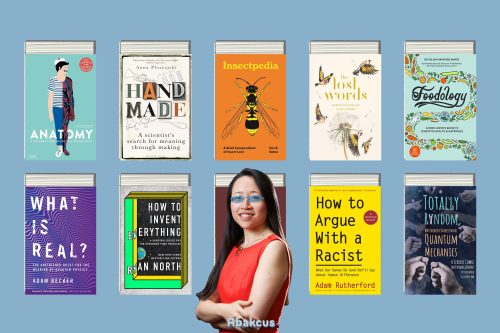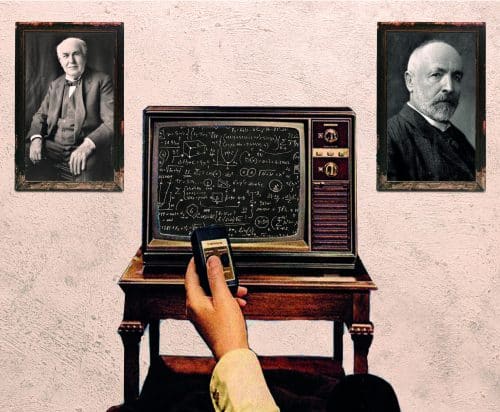As a parent, one of the greatest gifts you can give your child is a solid foundation in math. It’s more than just numbers and equations; it’s a universal language that unlocks a world of critical thinking, problem-solving, and even creativity. That’s why children’s math books are an absolute must-have in your home library. In this blog post, I’ll share with you my top picks for children’s math books that are not only educational but also engaging and entertaining. These books are designed to spark a love of math in your little ones, making learning feel like a fun adventure rather than a chore. So, let’s dive in and discover the magic of math together!
Being a child is a phase of life characterized by growth, discovery, and unbridled curiosity. It’s a time of learning, both academically and socially, where experiences are fresh, and the world is a wonder to explore. Children possess the unique ability to live in the moment, finding joy in the simplest of things. Despite challenges and obstacles, childhood often represents an era of innocence and freedom, setting the foundation for the individual’s future identity and worldview.
Indeed, the power of a child’s brain is immeasurable. Akin to a sponge, it readily absorbs information from the environment, constantly learning, adapting, and creating neural networks. Every child, given the right opportunity, nurturing environment, and stimulation, has the potential to become the main character in their own extraordinary intellectual feats, reminiscent of geniuses like the mathematical magician, Albert Einstein.
It’s our responsibility as parents, educators, and society to recognize and cultivate this potential, to inspire a future generation of thinkers, innovators, and leaders in their daily life. One educator who has made significant contributions to this field is Greg Tang, whose innovative approach to teaching math has helped countless students develop a love for the subject.
A Child’s Math Journey
As an educator and father of two little kids, I always believed that the journey into mathematics for a child should commence at an early stage. Mathematics, often perceived as an abstract and challenging subject, can be made enjoyable and relatable for children through playful, everyday experiences. Jon Scieszka, the author of “Math Curse,” is a great example of how math can be made fun and engaging for kids through storytelling. Another great resource for children is “Anno’s Counting Book,” which uses beautiful illustrations to teach counting and basic math concepts, including the use of the Anno’s counting book.
Counting toys, comparing shapes, or understanding the concept of time, all lay the foundation for a child’s numerical literacy in different ways. Early exposure to math not only enhances problem-solving and logical reasoning abilities, but also instills a strong number sense, nurturing a generation that is comfortable and confident with numbers. It’s crucial to remember that math is not about rote learning, but understanding concepts, finding patterns, and making connections – a journey that begins right from one’s childhood. Understanding these concepts will help children to take the rooster’s off and become confident in their mathematical abilities.
It’s absolutely astounding to witness a child’s memory retention capabilities, especially when it comes to older kids. They are capable of recollecting events or details from years ago, surprising us with their vivid recollections. This remarkable ability is not just limited to remembering family trips or birthdays, but can also extend to learning experiences. This is particularly useful when it comes to mathematics.
If a child can recall and build upon their mathematical encounters from years ago, it can lead to a deeper, more comprehensive understanding of the subject. This powerful tool of memory can thus be harnessed to further enhance a child’s mathematical journey, making the learning process interesting, engaging, and impactful. David Adler, a renowned mathematician, has written extensively on the subject of mathematical education for children and is a valuable resource for parents and educators alike. Cindy Neuschwander, another expert in the field, has also contributed significantly to the development of mathematical education for children.
Why is Number Sense Important in Early Learning?
Number sense and math skills, including the use of math picture books, are key components in early learning due to several significant reasons. It refers to a child’s ability to understand large numbers and their relationships, enabling them to perform basic arithmetic operations, estimate quantities, and discern patterns. Developing a strong number sense and math skills during the early years of a child’s life is akin to laying a solid foundation for a house. Without this bedrock, advanced mathematical concepts become challenging to comprehend and apply.
Moreover, number sense plays an integral role in everyday life, helping children understand the world around them in a more structured and logical manner. It aids in tasks such as telling time, baking, shopping, or planning a schedule.
Lastly, a strong number sense can contribute to a child’s academic confidence, especially in young children. When children understand numbers and their applications, they can engage in classroom activities with greater self-assuredness, fostering an overall positive attitude towards learning. This can lead to improved academic performance, not just in mathematics, but across all subjects.
Understanding the properties of basic shapes, such as the rectangle, can also contribute to a child’s number sense and overall academic success. One way to help children understand shapes and their properties is through the use of books like “Sir Cumference and the First Round Table,” which introduces geometry concepts in a fun and engaging way, authored by April Pulley Sayre.
Therefore, cultivating number sense in early learning, including in Kindergarten and third grade, is not merely about teaching children to count, add, or subtract. It’s about shaping confident learners who can navigate the world with a logical and analytical mindset.
Pattern Recognition and Sorting in Math
Pattern recognition is another fundamental skill in a child’s mathematical journey. It involves identifying recurring sequences or trends and predicting what comes next. This skill is not only crucial in mathematics, but it also plays a significant role in understanding the world around us. From predicting the changing seasons to understanding the rhythm of a song, pattern recognition is everywhere, even in the behavior of pigeons who are known to solve simple riddles. One great example of a children’s book that teaches pattern recognition is “The Greedy Triangle” by Marilyn Burns, which was praised by the poet and playwright Eve Merriam.
In the context of mathematics, pattern recognition aids in understanding number sequences, geometry, and even algebra at a later stage. Sorting, on the other hand, is a child’s first step into the world of data management. It involves grouping objects based on certain attributes like shape, size, color, etc. This seemingly simple task helps children understand similarities and differences, organize information logically, and make informed decisions.
Mouse Count, a popular children’s book by Mitsumasa Anno, is a great way to introduce sorting and counting to young children. Pythagoras, the ancient Greek mathematician, was known for his contributions to geometry and the Pythagorean theorem, which involves the relationship between the sides of a right triangle and is still widely used today. Crocodiles, which are known for their sharp teeth and powerful jaws, are also fascinating creatures that can be studied using mathematical concepts.
Therefore, incorporating activities that promote pattern recognition and sorting in a child’s everyday routine can have a profound impact on their mathematical abilities. Games, puzzles, and picture books are excellent tools to achieve this.
In the following sections, I will be highlighting some of the best children’s math books that make learning these concepts fun and enjoyable, even if they are as small as a grain of rice. These concepts include decimals.
Problem-Solving Skills through Math Books
One of the most invaluable skills that children’s math books can cultivate is problem-solving. The interactive exercises and puzzles presented in these books challenge young minds to think critically and come up with solutions. These activities often require kids to use their understanding of numbers, shapes, and patterns in innovative ways, thereby enhancing their ability to approach problems with analytical thinking.
As they work through each problem, not only do they become more adept at math, but they also develop resilience and determination in the face of challenges, such as identifying black dots in a pattern or fish eyes. This ability to tackle problems does not just aid in mathematical learning, it also significantly contributes to their overall intellectual and personal growth, including the popular children’s book “Grandfather Tang’s Story” which incorporates problem-solving skills in its storyline.
But what is the best way to spark a love of math in kids?
Math Books Are the Right Apparatuses to Start A Child’s Math Journey
Indeed, children’s math books are the quintessential apparatus to start a child’s math journey. Illustrated with colorful, engaging images and filled with relatable scenarios, they effortlessly merge fun and learning in a fun way. Many math books for kids often incorporate enjoyable elements like puzzles, games, and stories, such as a fun story by Steven Kellogg, to explain mathematical concepts, making the subject less intimidating and more interesting for young minds. A fun book can be a great way to introduce math to children and help them develop a love for the subject.
They nurture curiosity, encourage exploration, and stimulate logical thinking, all while teaching the fundamentals of numbers, shapes, and patterns. Most importantly, these books are designed to make the child the protagonist of their learning journey, fostering a sense of accomplishment and fostering a love for math and animal friends.
What are the Best Children’s Math Books?
Below, I have curated a list of my top 15 favorite children’s math books. Each of these children’s math books is a vibrant splash of color, fun, and learning that’s sure to make your child’s mathematical journey an exciting adventure. So, without further ado, let’s dive into this colorful world and discover the joy of learning math through these delightful children’s math books.

The cosmos and our own planet Earth are realms of infinite wonder and complexity, something that Seth Fishman captures with delightful clarity in “A Hundred Billion Trillion Stars.” The book is a compelling synthesis of facts, figures, and illustrations that invites readers to ponder the incomprehensibility of the numbers defining our universe.
A key charm of the book lies in the colorful, whimsical artwork by Greenberg. The illustrations are more than mere visual treats; they are essential storytellers that make sense of the astronomical numbers presented. From the sporadic scattering of stars to the verdant sprawl of forest canopies, the art lifts the astronomical numbers off the page and into the imaginations of the readers.
Fishman addresses youngsters with an affable and engaging tone that turns potential intimidation before large figures into an irresistible curiosity. The author manages to tow the fine line between imparting wisdom and keeping the vibe light-hearted. It’s easy to forget you are learning when the voice guiding you sounds like an enthusiastic friend.
Without question, the book is a treasure trove for educators and parents eager to introduce children to STEM subjects. It’s good at igniting curiosity about math, science, and the natural world. The facts presented are thought-provoking and often spark deeper conversations about our place in the universe, conservation, and the environment.
Although the subject matter might suggest a niche audience, “A Hundred Billion Trillion Stars” is surprisingly versatile. If your child enjoyed “Ada Twist, Scientist” or the numerical adventures of “How Much Is a Million?” this book fits perfectly into that gallery of inspiring reads. It’s a potential springboard into a love for all things science and math, even for those whose passion lies elsewhere.
While many consider storytime an affair of fables and fantasies, Seth Fishman shows that there’s magic to be found in reality too. With its plethora of captivating facts, the book is a unique choice for a bedtime story. It’s an ode to the real-life enchantment that surrounds us, often overlooked in our daily lives.
In conclusion, “A Hundred Billion Trillion Stars” is a magnificent exploration of the large numbers that shape our universe. By blending education with mirthful narration and vibrant illustrations, it enthralls young readers and provokes a profound sense of awe and curiosity. This book assures a spot on the shelves of those who cherish the blend of knowledge with a dash of wonder, reminding us all of the beauty inherent in learning.
Cheryl Bardoe’s biography, “Nothing Stopped Sophie: The Story of Unshakable Mathematician Sophie Germain,” is an inspiring narrative that takes readers through the highs and lows of a pioneering woman in mathematics. This beautifully illustrated book not only tells the story of an intellectual heroine but also serves as a potent emblem of tenacity and resilience in the face of adversity.
Bardoe’s work seamlessly blends the rigors of mathematical ingenuity with the touching human story of Sophie Germain. We are transported to a time when women were unjustly kept at the sidelines of academia, and where Sophie Germain’s unwavering determination stands in stark contrast. Through meticulous research and compassionate storytelling, the author presents Sophie not just as a mathematician but, more compellingly, as a visionary who dared to defy the gender norms of her age.
The book does an exceptional job of emphasizing key themes such as perseverance, intellectual passion, and equality. Bardoe has created a book that transcends mere biography and ascends into the realm of motivational literature. The character of Sophie comes across as incredibly relatable, thereby encouraging especially young readers to pursue their dreams with vigor.
Illustrations in “Nothing Stopped Sophie” play an equally important role in engaging the reader. They serve as a visual symphony that complements Bardoe’s elegant prose, bringing 18th-century France to life and providing a colorful backdrop to Sophie’s academic endeavors.
It’s evident through every turn of the page that the author holds deep admiration for her subject. The writing style is such that it makes complex mathematical concepts accessible to laypersons, thus making science and learning appealing to everyone.
While the book primarily targets a younger demographic, it maintains a level of sophistication that will intrigue adult readers, too. It is a testimony to the universal appeal of Sophie Germain’s story as well as the universal passion for learning and exploration.
This is much more than a straightforward retelling of historical events—it is an homage to the spirit of a woman who reshaped the world of mathematics. Every school library should house a copy, every parent should consider it for story time, and every young person should draw strength from its message. Sophie Germain’s legacy, as encapsulated in the pages of Cheryl Bardoe’s book, remains an unfading beacon of inspiration.
“Nothing Stopped Sophie” is a vital addition to historical and scientific literature for children and adults alike. It’s a celebration of mind over matter, diligence over dismissal, and creativity over criticism. This book is indispensable for anyone who desires a poignant reminder of how one person’s resolve can echo through the annals of history.
In the vast expanse of literature celebrating historical figures who changed the world, “Nothing Stopped Sophie” shines brightly as a beacon of inspiration. Sophie Germain’s story resonates profoundly in our current times, reminding us that the quest for knowledge and the determination to overcome barriers is timeless.
What are 7 year olds learning in math?
At the age of seven, children are typically in Grade 2 and they are expanding their understanding of math beyond basics. They are building upon the number sense, pattern recognition, and problem-solving skills they’ve developed in earlier years. At this stage, children are learning to add and subtract two-digit and three-digit numbers, and are starting to understand the concept of multiplication and division.
They are also exploring more about fractions, particularly halves and quarters. In terms of geometry, seven-year-olds are learning to identify, describe, and compare different shapes and their attributes. They are also introduced to the concept of measurement, including length, weight, volume, and time. These concepts are taught using a variety of methods, including interactive activities, games, and math story books to make the learning process enjoyable and effective.
What helps kids learn math?
Several factors aid in children’s math learning. The first is a supportive learning environment, where children are encouraged to explore, make mistakes, and learn at their own pace. This cultivates a positive attitude towards math and reduces math anxiety.
Interactive and hands-on activities also play a crucial part in math learning. These can include math games, puzzles, or real-life applications of math, like cooking or shopping, that make learning engaging and meaningful.
Moreover, children’s math books are phenomenal tools that blend storytelling with mathAn error occurred during generation. Please try again or contact support if it continues.
At what age should a child know math?
Mathematical understanding begins to develop from a very early age. Children as young as two start exhibiting the ability to count and recognize numbers in their environment. Around the age of 3-4 years, kids typically start grasping the concept of addition and subtraction on a basic level, mainly through practical life experiences and play. By the age of 5-6, as they enter school, children become more comfortable with numbers and start learning more complex mathematical concepts like place values and simple fractions in an academic setting. So, in essence, a child’s math journey begins as early as their toddler years and continues to evolve through their academic life.
What math do 8 year olds learn?
By the age of eight, typically in Grade 3, children’s mathematical abilities are further refined and broadened. They continue to work on addition and subtraction, but now with larger numbers, up to thousands. Multiplication and division become a significant focus, including understanding of multiplication tables and applying them to solve problems.
They further delve into fractions, learning to compare and order them, and beginning to add and subtract simple fractions. In geometry, eight-year-olds start to investigate the properties of two-dimensional shapes and learn about perimeter. They also gain a deeper understanding of measurement concepts, including the measurement of time and money. Children’s math books continue to be valuable aids in teaching these concepts, making them more accessible and engaging for eight-year-olds.
How can I find out if a book is worth buying for my child?
Determining whether a book is worth buying for your child involves a few critical considerations. Firstly, assess the book’s relevance to your child’s age and their current level of mathematical understanding. The book should be challenging enough to stimulate their intellect but not so difficult that it overwhelms them. Secondly, look for reviews from other parents or educators who have used the book. Their insights can provide valuable information about the book’s effectiveness in teaching math concepts.
Thirdly, peruse the book yourself—does it make math fun and engaging? Is it visually appealing with colorful illustrations or diagrams? Does it incorporate stories or characters that your child can relate to? Lastly, consider the children’s math book’s longevity. A good book will not just be beneficial for immediate learning but also serve as a resource that your child can return to for reinforcement or advanced learning.
What makes good children’s math books better than others?
Good children’s math books adhere to a few key principles that set them apart from others. Firstly, they embed mathematical principles into compelling stories that captivate children’s interest and imagination. This story-based approach makes abstract math concepts more concrete and relatable for children.
Secondly, they are visually appealing, utilizing vibrant colors, engaging illustrations, and easy-to-read text. Thirdly, they provide interactive elements, such as puzzles, exercises, or real-life examples, which encourage active learning and help children see the practical applications of math. Lastly, exceptional children’s math books are age-appropriate, aligning with the child’s cognitive development and mathematical understanding. They gradually increase in complexity, offering consistent challenges that encourage progress while ensuring the child never feels overwhelmed.












